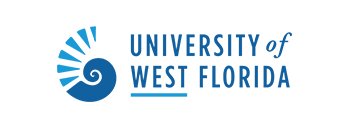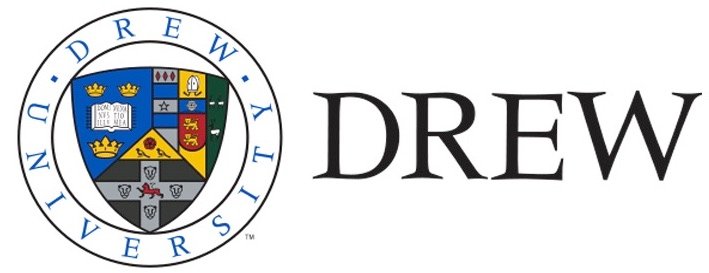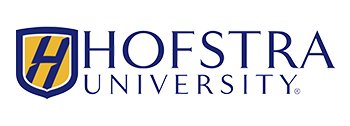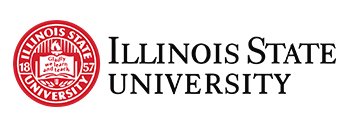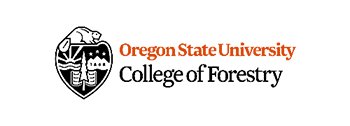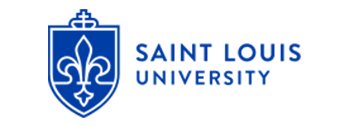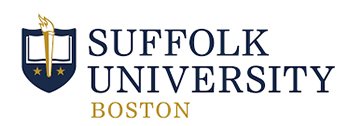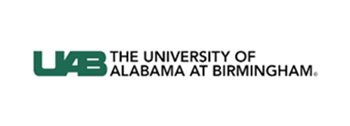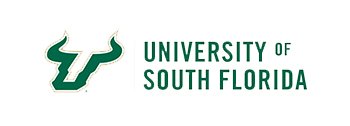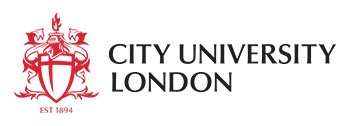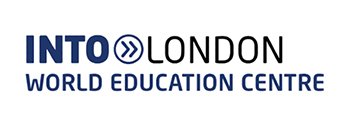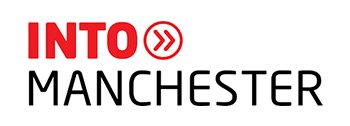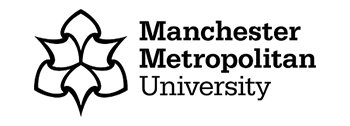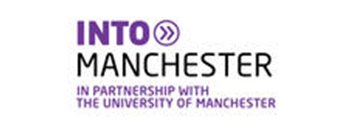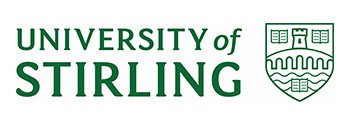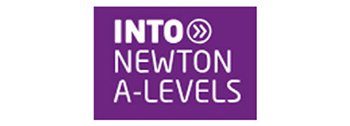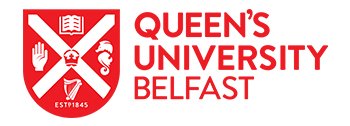US education is rich in experiences, both academic as well as personal. US universities are some of the best multidisciplinary institutes in the world and foster the growth of an individual at several stages throughout the study. The infrastructure available to students includes high-end research labs, well-equipped libraries, student lounges, study areas as well as recreational facilities, which all add to the campus experience.
What sets US universities apart is their focus on research. The entire learning experience is boosted when taught by top researchers in the field of study. Universities also receive corporate and public grants to advance research in areas of demand and this ensures the continuance of the most cutting-edge innovations on campus.
These are just some nuances of a US education, the overall exposure and experience are unmatched. See it to believe it!
Public Institutions are funded by states and territories (city or county) and usually offer lower tuitions as compared to Private Institutions. Each state in the US has at least one Public Institution. Tuition for in-state students (students who have residential status in the state) is significantly lower than that for out-of-state students. Departments within a Public Institution may receive private funding to further their research or academic interests. Several scholarships are funded through private endowments.
Private Institution
Private Institutions are primarily funded through private sources and are usually more expensive tuition-wise than Public Institutions. It is not uncommon that certain research projects or departments within a Private Institution get funding from the state or national governments. The likelihood of financial support at Private Institutions is generally higher than at Public Institutions.
Community College
Community colleges are generally 2-year publicly funded institutions that offer academic, vocational, and/or professional education. Qualifications granted are usually Diplomas, Certificates, or Associate Degrees. The programs may also be termed Continuing Education programs. The cost of education at a Community College is usually lower than that at a 4-year institution. Several Community Colleges have tie-ups with the local Public Institution, such that the Community College provides the first two years of undergraduate-level education followed by the 4-year institution providing the next two.,,,.
| S.No | University Name |
|---|---|
| 1 | University of Connecticut, Connecticut |
| 2 | Arizona State University, Phoenix, Arizona |
| 3 | University of California, Riverside, California |
| 4 | Virginia Tech Language and Culture Institute, Blacksburg, Virginia |
| 5 | University of Arizona, Tucson, Arizona |
| 6 | Drexel University, Philadelphia, Pennsylvania |
| 7 | University of Delaware, Newark, Delaware |
| 8 | George Mason University, Fairfax County, Virginia |
| 9 | Duke University, Durham, North Carolina |
| 10 | Colorado State University, Fort Collins, Colorado |
| 11 | Oregon State University, Corvallis, Oregon |
| 12 | University of Illinois at Chicago, Illinois |
| 13 | University of South Florida, Tampa, Florida |
| 14 | The University of Alabama Tuscaloosa, Alabama |
| 15 | Claremont Graduate University, Claremont, California |
| 16 | Auburn University, Alabama |
| 17 | University of Utah, Salt Lake City, Utah |
| 18 | University of Cincinnati, Ohio |
| 19 | Ohio University, Athens, Ohio |
| 20 | University of South Carolina, Columbia, South Carolina |
| 21 | University of the Pacific, Stockton, California |
| 22 | University of Kansas, Lawrence, Kansas |
| 23 | Baylor University, Waco, Texas |
| S.No | University Name |
STUDENTS SHOULD BE ADVISED TO:
- Always give complete and accurate information
- Always give their name in the same way on the application form and the supporting documents
- List the major as stated in the materials received from the institution
APPLICATION FEE
- If an application fee is required, it should be submitted with the completed application
- The application fee is a processing fee, and few institutions will process an application without it
- The fee should be in US$ and drawn on a US bank for quicker processing
OFFICIAL ACADEMIC RECORDS
An Academic Record is also known as Transcript. Your Official Academic Transcript details the units you have completed in your program and any majors/minors or specializations you completed.
Your record also includes all unit attempts and your grade for each unit.
- Both in English and the native language
- Official academic records include: Certified copies of official degrees or diplomas
- List of courses and grades for all post-secondary education
- Records should be sent in a sealed envelope with the application; alternatively, the issuing institution should send the records directly. Students should never send originals!
- Photocopies should be certified by the university or other appropriate officials.
TEST SCORES
- GRE – required by many, but not all
- GMAT – virtually all business programs
- English Proficiency (TOEFL) – all
- Attest center, indicate to which schools you want the scores sent
- Include a photocopy of scores with the application, if possible
LETTERS OF RECOMMENDATION
Applying for universities in the US is a comprehensive task. As part of the application, universities require candidates to submit a resume to help them get to know about candidate better. Universities want to know basic information like educational background, academic qualifications, and other skills. A good resume will answer all those questions clearly and comprehensively.
- The best letters comment on academic achievements or professional potential
- Some universities provide a special form for the letters, in other cases, the recommender can use his/her letterhead paper
- As a courtesy, the student should provide the referee with a stamped envelope addressed to the institution marked “Re: Application of [student’s name]” when asking for a recommendation
- Applicants should allow plenty of time for the referees to write the letter, and follow up to ensure that they are sent in time
INFORMATION TO BE INCLUDED
- How long has the writer known the applicant?
- What is their relationship (teacher/student, employer/employee, etc.)?
- A ranking of the student in comparison with his or her classmates
POINTS TO BE DISCUSSED
- Intellectual ability
- Knowledge of field
- Work habits
- Motivation to pursue study
- Seriousness of purpose
- Emotional maturity
- Resourcefulness and initiative
- Adaptability to new situations
- Leadership qualities
- Potential for future contribution in the field
PERSONAL STATEMENT
- The personal statement can mean the difference between admission and denial.
GOAL: CLEAR, CONCISE, AND PERSUASIVE
- Academic or research interests
- Reasons for wanting to pursue graduate study
- Reasons for choosing a certain institution
- Career goals
- Personal background/extracurricular activities
- Tailor to each institution – answer the questions asked!
WHAT TO AVOID
- Do not be overly informal
- Do not include irrelevant information
- Do not write your life story – be brief, yet complete
ADMISSIONS COMMITTEES
WHAT DO THEY WANT?
- Outstanding students
- Committed and motivated students
- Diversity of backgrounds
GENERAL ADMISSION CRITERIA
- Previous degree(s)
- Outstanding test scores and GPA
- Strong Letters of Recommendation
- Convincing and memorable Statement of Purpose
SPECIFIC ADMISSION CRITERIA
- Knowledge/results in the department’s fields of research)
- Experience in/potential for research or teaching
- The difficulty of classes taken as an undergraduate
- The prestige of an undergraduate institution
TUITION COST
Tuition fees or tuition is the largest component of the cost of a US education. The amount is highly dependent on the university and also the degree a student is enrolled for. As a general rule, tuition at Private Institutions is higher than at Public Institutions. Tuition at Community Colleges is usually the lowest, primarily because they do not have high research expenses as compared to 4-year institutions. There may always be exceptions to this rule.
Also, students with residential status in a state qualify for in-state tuition at the Public Institutions in the state. This is significantly lower than the out-of-state tuition charged to non-residents and international students. A student who gets offered a scholarship (even a partial scholarship) may also be eligible for in-state tuition.
LIVING EXPENSES
Living expenses include all the other expenses a student will incur while pursuing a US education, such as rent, food, books, and other personal expenses. These expenses, especially rent, are extremely location sensitive. The university usually provides an estimate for living expenses in the I-20 sent along with the admission package. However, costs can be much lower too.
HEALTH INSURANCE
Healthcare in the US can become a major expense in the case of sickness or medical emergency and students should purchase medical insurance to cover for the possible burden. Several health insurance plans are available in the US for international students and premiums vary based on the plan selected. A few things to consider while selecting insurance include the coverage, both in terms of the ailments covered and the amount covered for, the deductible, and the geographical coverage area, among others. The international students’ center at a university will usually be able to help guide foreign students on obtaining medical coverage. Several universities also allow students to carry overseas insurance.
FINANCING
Several banks and financial institutions offer loans to students going abroad for higher education. The amount may be used for paying tuition or expenses or a combination of both. Approval of loan applications is contingent on a review of financial documents, provision of collateral on the loan, and sometimes also dependent on the University of attendance. These requirements are extremely specific to the company providing the loans.
STUDENT LOANS
Several banks, as well as financial institutions, provide loans to international students to fund their education. However, they may need a US citizen or permanent resident of good financial standing to be a co-signer or guarantor on the loan. The student will need to submit documents which may include the admission letter, I-20, proof of identity, and documents from the cosigner. The loan amount approved is usually capped by the total expenses listed in the I-20 and may be paid directly to the university, depending on the policies of the loan provider.
SCHOLARSHIPS
Scholarships pay towards a student’s tuition and are offered either for the entire course of the program or on a semester-by-semester basis. Scholarships are generally offered based on past academic records, the student’s educational goals, and the university’s goals. Partial scholarships are also possible. Scholarships pay towards the student’s tuition and may also make the student eligible for in-state tuition for the remaining amount.
FINANCIAL SUPPORT
Research Assistantships may be offered to students who wish to conduct research in specific areas that the university excels in. Selection is made based on past academic and professional records as well as future research goals. ships usually qualify a student for tuition waivers and/or pay an additional stipend. Students who get offered RAships are most often Ph.D. students, but it is not uncommon for Graduate students to be offered the same.
Teaching Assistantships are offered to students with the potential to teach, based on academic performance for the related course. Teaching assistants help the professor conduct lectures and labs, grade exams and homework, and answer student queries. TAships may qualify for full or partial tuition waivers and/or an additional stipend.
Graduate Assistantships are mostly administrative positions at the University. GAships may be in the form of tuition waivers, stipends or a combination of both.
In addition to completing the application and essays, you will have to provide certified copies of your original educational credentials (diplomas, grade reports, test scores, comprehensive exam scores), certified English translations of these documents, TOEFL exam scores, scores for any required academic entrance examinations, financial information, letters of recommendation from teachers, and the application fee. Put all the items requested, or your application will be considered incomplete. The admissions office will not review your application until it is complete, and the onus is on you to make sure they receive all of the required documents. If a requested document is not available, include a letter stating this and explaining why the document could not be provided.
Following are the some detail points which required to prepare the Application
- The transcripts of your educational records should be sent directly from your former schools. This is to prevent forgeries and modifications to your transcripts. The admissions office will also want explanations of the grading and class ranking system and descriptions of the courses
- Do not send your original documents, since they will not be returned. Copies should be certified with the school’s official seal or by a notary public. English translations, if necessary, should be done by a professional translator and also certified. The translator should not be your relative. Information about professional translators can be found in the credential evaluation section of this site. US embassies and consulates do not certify documents
- The application will ask questions about your academic background, your hobbies and extracurricular activities, and your educational and career plans. It will also require your state of purpose essay. The purpose of the essays is partly to see an example of your English writing ability, and partly to provide an opportunity for you to express yourself in a more open format
- One of the essays may be a statement of educational purpose. Use this essay to explain why you are pursuing an education in your field, describe your experience and strengths in that field, and outline your plans for the future. Weave the strands of your life together into a tapestry that shows where you have been, where you are now, and where you are heading. Your essay should be cohesive and well-organized. Give specific examples to support any general statements. Edit your essay for spelling and grammatical errors before writing it on the application form
- Pay careful attention to the deadlines, and allow enough time for mailing. Submit your completed applications 2 or 3 months before the deadline. Send the applications as early as possible
- Keep a copy of everything you send to the admissions office. If your application is lost in transit, this will help you resubmit it
- Create a chart showing all the deadlines and important dates, and keep a record of the date you mailed each application. This will help you track your progress. When asking for letters of recommendation, choose teachers who know you well. If a teacher taught you for 2 years, that is better than a teacher who taught you for only 1 year. Ask teachers who will give you a good letter of recommendation
- Provide your references with a copy of your completed application or a summary of your qualifications. This will remind them of your skills
- The best letters will present a truthful appraisal of your abilities, highlighting both weaknesses and strengths. A letter from a teacher who taught you in a challenging course is more valuable than a letter from a teacher who taught you in an easy class. The purpose of the letter is to evaluate your background, motivation and promise, and not to offer useless praise. When admissions officers get letters from a teacher for several students, praising each of them as the best he has seen in his career as a teacher, they ignore them. The result is a negative mark against the students, not a positive one. It is better to be balanced in presentation, so that the admissions officer can learn to trust a teacher’s opinion over the years
- Your teachers will want to mail their recommendations directly to the university. Provide them with a stamped airmail envelope with the correct address, and write your name in the lower left hand corner of the envelope
- Applications from international students are increasingly being reviewed in a need-sensitive manner. Competition among international students is tough, most schools can get enough qualified students who do not have financial need. As a general rule, it is still worth applying for financial aid. If you need financial aid and do not apply for it, the school might admit you without offering any aid at all, giving the same result as an outright rejection. Many international students have sent email reporting that they have been offered admission to a US university but do not have enough financial resources to pay for the cost of education, even when the schools provide some financial aid
- Once you have submitted your applications, you have to wait for several months before hearing anything. If you do hear anything in that time period, it will usually be a request for additional or missing items
- If you are lucky, you will be accepted by multiple institutions. They will send you a letter of admission. Accept one (and only one) of the offers of admission, and confirm your acceptance according to their instructions. You will probably have to write a letter to the admissions office confirming that you will enroll and include a non-refundable deposit of several hundred dollars. They will then send you the form you need to apply for a student visa (Form I-20). If there are any additional forms, submit them in a timely fashion
- Once you have accepted one of the offers, send a letter to the other schools declining their offers. Not only is it polite to do so, but it allows them to reallocate the funds they offered you to other applicants
The following calendar and checklist will help you with your college admissions planning. It begins 24 months (2 years) before your planned enrollment date.
| When | What |
| September (24 months) | Begin your search for colleges. Visit the nearest educational advising center and the library. Explore college sites on the web. Talk with family, friends, and acquaintances who have studied in the US. Write to 10-15 schools for information |
| October-November (22-23 months) | Start preparing for the TOEFL exam and other admissions tests (e.g., GRE, GMAT, or SAT). |
| December – May (16-21 months) | Register for the TOEFL exam and other admissions tests. |
| January (20 months) | Choose the schools to which you will apply. Request application materials if you have not already. |
| March – June (15-18 months) | Take the TOEFL and other admissions tests. You must take the tests before November, or you will miss the deadlines at most universities. Taking the tests now gives you a chance to improve your scores by taking them again in October. |
| May (16 months) | Select the teachers you will ask for letters of recommendation. |
| July (14 months) | Read the college applications and backtrack the deadlines to allow enough time to complete them. Remember to allow for delays in the mail. Narrow your list of schools to 10. |
| August (13 months) | Write a draft of your application essays and statement of purpose. Get feedback on it from friends and an English teacher. |
| September (12 months) | If you want to try improving your scores on the TOEFL and other exams, register for a second set of tests. |
| September (12 months) | Ask your teachers to write letters of recommendation for you. Given them the necessary forms and a stamped, addressed envelope. |
| October (11 months) | Complete your essays and application forms, including the financial aid application forms. Airmail them. Ask your schools to send certified copies of your academic transcripts. |
| October (11 months) | Take the TOEFL and other exams again, if required. |
| November (10 months) | Check with your teachers and the school to make sure your recommendations and transcripts have been posted. |
| December (9 months) | Respond promptly to any requests for additional data. |
| April-May (4-5 months) | You will start hearing from colleges. Contact the admissions office if you do not receive anything from them. Accept one school’s offer, and notify them and the others of your choice. Ask the school to send you the I-20 or IAP-64 form. Make permanent accommodation arrangements if you will be staying on-campus, temporary housing arrangements if you will be living off-campus. Apply for a passport if you do not already possess one. |
| June (3 months) | Apply for a visa. Attend pre-departure orientation programs in your country. Make travel arrangements. Plan to arrive at least 15 days before orientation (2 months if you have to take an English course). |
| July-August(1-2 months) | Have a nice trip! |
Academic Entrance Examinations
All schools require the Test of English as a Foreign Language (TOEFL). See the English as a Second Language section for more information about TOEFL.
Schools may also require tests of general academic preparation, such as the SAT or ACT, and field-specific tests such as the Achievement Tests.
All of these tests are standardized, multiple choice tests, written in English. If you do not have a high level of English proficiency, you will not do well on these tests, no matter how strong your academic background.
About one month after the examination, your scores will be sent to the institutions you mentioned on the application form. It will take an additional 2 to 4 weeks for you to receive your copy of the score report, so it is best to not wait to see the scores before sending them to the schools to which you have applied.
For more information about the SAT, ACT, GRE, GMAT, TOEFL, and other standardized exams, please see below.
Admissions Testing
Reagan Global can assist you with this.
Requesting Application Materials
Schools usually have different application materials for international students, so it is important that you identify yourself as an international student when you contact the admissions office.
So possible differences are:
- The need to include certified translations of your education credentials
- No eligibility for early action and early decision programs
Application requirements and deadlines are usually the same. However, you should allow extra time for applications to arrive, because the international postal system introduces delays. Expect it to take 4 to 6 weeks for you to get a response to inquiries. So allow plenty of time. Get information from web sites and by email and facsimile. You should begin the process at least a year and a half in advance of the application deadline, and no later than August of the year prior to the academic year in which you plan to enroll.
Send all inquiries by airmail and request an airmail reply. Even if you are able to correspond by facsimile and email, the actual application and accompanying documents will need to be sent by airmail.
Your initial inquiry should be addressed to the Director of Undergraduate Admissions for undergraduate applications, to the Department Chair or Dean of the Graduate School or Director of Graduate Admissions for graduate applications. Your initial inquiry should either include a preliminary application form obtained from the nearest educational advising center, or at least the following information:
- Your name, indicating which of your names is your personal or given name and which of your names is your family name. It is helpful if you underline the family name or write it in all capital letters. You should spell your name the way it appears on your passport. When corresponding with a school, it is important to always use the same spelling of your name. If you change the spelling of your name, some of your records might get lost. If some of your documents will contain a different spelling of your name, attach a note giving your name as it will be used on your application form
- Your date of birth, written with the month first, followed by the day then the year, using the Gregorian calendar system. Spell out the name of the month instead of using numbers, because date conventions differ from country to country. For example, 4/3/67 is April 3, 1967 in the United States, not March 4
- Your mailing address
- Your citizenship and the name of the country issuing your passport
- Your marital status and the number of dependents
- Your entire education, listed in chronological order, including all secondary schools, colleges, and universities you have attended. Include examination results, grades, and class rank if available
- Your intended program of study and the month and year in which you hope to begin studying in the United States
- A summary of the total funds you have available to meet your educational and living expenses during each year of study in the United States. Give as much detail as possible, such as the sources of these funds. Otherwise the admissions officers will refuse to issue the certificates you need to request a visa to study in the United States
- A list of your TOEFL scores and other admission tests. If you have not yet taken the tests, list the dates on which you are registered to take the tests. Also mention where you studied English and the total number of years of English language study
If you do not provide this information, the school will respond with a preliminary application that requests it. Otherwise, if you meet their preliminary criteria, they will send you a full formal application for admission with instructions.
Scholarship for International Student
You will certainly encounter several scholarship matching services that, for a fee, will offer to search a database of scholarships for awards that match your profile. Unfortunately, the vast majority of awards in these databases are only for US citizens and permanent residents. Do not waste your money on such services.
A word of caution: If a scholarship has an application fee, do not apply. If you have to pay money to get money, it is probably a scam. For more information about scholarship scams, the unclaimed aid myth, and related topics, see the Scholarship Scams section of the FinAid site.
International Education Financial Aid
This site contains a free searchable database of 870 scholarships and awards for international students. Most are restricted to use at specific universities.
Financial Aid For International Student
US education is very expensive. Tuition, room and board at an undergraduate institution will cost from $15,000 to $40,000 a year, contingent on the school. A graduate education can be even more expensive.
There is very little financial aid for foreign nationals to study in the US, with the possible exception of citizens of Canada and Mexico. Most grants, scholarships, and loans from public and private sources are restricted to US citizens.
As a result, international students will find very little information about financial aid for international students. This site presents more information about financial aid for international students than any other publication. This information originally appeared as part of the FinAid site.
Below you will find a description of how to access what aid is available, and a discussion of some of the problems you may face as you pay for a US education.
Visa Interview
American Consulate has introduced a system of prior appointment for Visa Interview. On the given date, the applicant has to appear for a personal interview. The applicant should convince the visa officer that he / she has the necessary funds to cover the cost of education. The applicant should prove that he / she has strong ties with India and also that he / she is not an intending immigrant. While answering the questions, one should be brief and to the point.
One should not be surprised or angry if the officer is unable to review all the documents that are carried by the applicant. Since officers have very little time for each applicant, they may not be able to look at many or even any documents at times. Therefore one should be prepared to explain one’s situation orally and to answer all questions promptly, patiently and confidently.
The applicant will be informed whether he / she has been granted or refused a visa on the same day. The name of the University whose I-20 has been submitted to the consulate, will also be mentioned on the passport. Therefore it is advisable to make the final selection of the University very carefully. If, for some reason, your visa is rejected in the first attempt, you can reapply after 3 working days.
Document Checklist
The following is a list of some of the documents that you are supposed to carry along with you on the day of VISA interview:
- Passport having validity of atleast six months
- Visa Fee Receipt
- Interview Appointment Letter
- I-20 and Admission Letter from the University / College mentioning the total cost of education in USA (If You have received Admission letters / Rejection letters from more than one University, carry all of them)
- Evidence of Scholarship / Aid / Grant, if any
- Sponsorship Letter
- Educational Certificates, Degrees, Diplomas & Mark sheets
- Score Reports of TOEFL and GRE / GMAT / SAT
- Work Experience Certificate / Reference Letter from Employer, if Employed
- Bank Statements / Pass Books of the sponsors for the last Three Years
- Summary Statement of Assets and Total Income of Family Members
- Income Tax papers of the sponsor and his Family for the last 3 years
- Proof of all movable and immovable assets
Some of the Questions likely to be asked by the Visa Officer:
- What is the purpose of your trip?
- Which university are you planning to go to?
- Who is sponsoring you?
- Why do you want to do MS / MBA?
- Why do you wish to study in the US and not in India?
- Why did you select this University?
- Do you have any relatives in the US?
- Why is your GRE / GMAT / SAT / TOEFL score low?
- What are you plans after completing your studies?
- What is your father’s annual income?
Sufficient Financial Resources
To get a F-1 visa approved, you will need to show that you have sufficient funds to pay for the first year of study and that you have resources available to cover the rest of your educational program. For an M-1 or J-1 visa, you will need to demonstrate that you have sufficient funds to pay for all tuition and living costs for your complete stay in the US.
The information you provide on the I-20 form (F-1) or IAP-66 form (J-1) will be scrutinized very carefully by both the foreign student advisor at the school and the INS. If you do not have the resources necessary for study in the US, you will not get a visa.
You should know where your money is coming from before you board a plane. Several schools require proof that you have enough money for the entire course of study even for an F-1 visa, because too many international students have to return home after only a year of study.
If your education will be sponsored by a US citizen (e.g., a relative), the relative will need to fill out a Form I-134 (Affidavit of Support). This form requires them to pay your expenses if you can not. A Form I-134 filed by someone who is not a relative does not count as much as a Form I-134 filed by a relative.
When calculating the annual cost of a US education at a particular college or university, add at least $6,000 Appox. to the published cost of tuition, fees, and room and board. The College Board publishes college costs, required admissions tests, and other useful information in The International Student Handbook of US Colleges.
When preparing a budget, you will need to account for the following costs:
- Application fees about $50 to $75 per school
- Academic entrance examinations will cost you around $100 to $200 per examination, and most students take at least 2 tests. Assume that you will be spending at least $500 on tests
- Tuition and fees will cost between $5,000 and $30,000 Appox. per academic year (9 months), depending on the type and quality of institution
- Books and study materials will cost $500 to $1,000 Appox. per academic year
- Travel costs to the US vary, but will be between $500 and $2,000 Appox. Travel costs within the US will be between $300 and $700 Appox
- Room and Board will cost between $3,000 and $7,500 Appox. anually. Allow an extra $1,000 to $2,000 for vacation periods when the dormitory might be closed
- If you will be living off campus, the cost of renting an apartment will be between $300 and $600 a month, but could be much higher contingent on the location of the school. Meals should cost about $2,500 a year, assuming that you do not eat in restaurants too many times
- Clothing will cost $500 or more anually
- Health insurance will cost $300 to $500 Appox. a year per person, $2,000 to $3,500 Appox. per family
- Personal expenses will cost around $2,000 Appox. per year
If you bring other family members with you, assume that your annual expenses will increase about 15% or $5,000 Appox. for each additional family member.
If you wish to buy a car, assume that it will cost you around $4,000 a year.
If you will be traveling during the summer, assume a cost of $50 to $75 Appox. a day for touring. If you will be continuing your education during the summer, add half the figure you calculated for the full year.
Assume that your costs will increase by about 5% per year due to inflation. Do not forget to include an allowance of about 10% to account for changes in exchange rates.
Use the financial planning worksheet to estimate your costs for a year of study in the US. Be realistic when estimating costs for personal expenses.
Financial Planning Worksheet
| Expense | Estimated Cost |
| Application and Test Fees | $____________ |
| Tuition and Fees | $____________ |
| Books | $____________ |
| Travel to US | $____________ |
| Room and Board | $____________ |
| Expenses when school is closed | $____________ |
| Clothing | $____________ |
| Personal expenses | $____________ |
| Health insurance | $____________ |
| Summer study or travel | $____________ |
| Additional family members | $____________ |
| Other | $____________ |
| ANNUAL TOTAL | $____________ |
| Multiply the total by the number of years in your program (___) | $____________ |
Employment
Do not count on being able to scrape up the funding after you arrive in the US. Getting a job is not an effective means of financing an education in the US. There are many restrictions on employment by foreign nationals, and some types of visas prohibit it totally. Most international students are limited to on-campus employment. Even if you are able to find work, you will not be able to get a job that pays well enough to cover all your expenses. The typical on-campus job will pay no more than $1,000 to $2,000 during the school year, and a similar amount during the summer vacation.
If you are studying on an F-1 visa, you may not accept off-campus employment during the first year of study. You may, however, take an on-campus job to fund the bills. You are limited to 20 hours a week while school is in session, provided that you do not displace a US resident. (The test for displacement is whether the position is normally filled by students.) Full time employment is allowed during vacations if you will be returning to school at the end of the vacation period. Immigration and Naturalization Service (INS) permission is not required to accept on-campus employment, but you must first apply for a Social Security Number and complete a Form I-9 (Employment Eligibility). You may also need to get authorization from the foreign student advisor.
Graduate students who are participating in a cooperative education program are sometimes permitted to work for an off-campus employer who has an educational connection or research contract with the school. The employment must be required for the degree.
After the first year of study, a student on an F-1 visa may ask the INS for permission to accept off-campus employment. Permission is often granted if the student is experiencing severe economic hardship through no fault of their own, such as major currency fluctuations, loss of financial aid, loss or lack of availability of on-campus employment, unusual increases in tuition or living expenses, unexpected financial changes in the student’s source of support, and unexpected medical expenses. The student must be in good academic standing and enrolled as a full-time student, and the foreign student advisor must certify the student’s Form I-538 (Certification by Designated School Official). The student must submit Form I-765 (Application for Temporary Employment Authorization) and filing fee, together with the certified Form I-538 and the student copy of Form I-20, to the INS for work authorization.The employment authorization will be valid for one year.
Students on M-1 visas may not accept any form of employment, except for a temporary internship for practical training purposes.
Working while on a B-2 (Tourist) visa is reason for immediate deportation.
Spouses and dependents of students admitted to the US on M-1, F-1, and J-1 visas may apply for M-2, F-2, and J-2 visas, respectively, in order to accompany the student during their stay in the US. Spouses and dependents of M-1 and F-1 students are not allowed to accept employment or engage in business while in the US. Spouses and dependents of students admitted on a J-1 visa may seek permission to work as a J-2 visitor. Individuals on a M-2, F-2, or J-2 visa will study on a full time or part time basis, but may not receive financial aid.
After you graduate, you might wish to work temporarily in the US. To do so, you will need to obtain H-1B status. Your degree must be in the area of expertise required for the position. You must have an offer of employment from a US employer. The employer must file paperwork to petition for H-1B status for you.
US Monetary System
The US Monetary System is a decimal system, with one dollar equal to one hundred cents. One dollar is written as $1 or $1.00. One cent is written as 1¢. One dollar and twenty-five cents would be written as $1.25. Dollar amounts are written with a comma every three digits, so one thousand dollars would be written as $1,000.00. Paper currency is used for amounts of $1 or more, and coins are used for amounts under $1. The most common coins and their dollar equivalencies are as follows:
| Coin | Value (Cents) | Value (Dollars) |
| Penny | 1 cent | 0.01 dollars |
| Nickel | 5 cents | 0.05 dollars |
| Dime | 5 cents | 0.10 dollars |
| Quarter | 25 cents | 0.25 dollars |
| Half Dollar | 50 cents | 0.50 dollars |
| Dollar | 100 cents | 1.00 dollars |
Paper currency is most often circulated in the following denominations: $1, $5, $10, $20, $50, and $100. Occasionally you will encounter a $2 bill. The denomination of all currency is clearly marked on the bottom of both sides of the bill, and on
CPT is defined as employment which is an integral part of an established curriculum, including: “alternate work/study, internship, cooperative education in USA, or any other type of required internship or practicum which is offered by sponsoring employers through cooperative agreements with the school.”
Our Testimonials

The consultancy guide as per student aspirations. And the shortlisting as per student profile was seamless and easy. And visa interview guidance by taking mocks and giving tips is very helpful as I applied for US university. Especially Kavita mam mentorship helped me with mocks and shortlisting.
Overall my experience was the best with Reagan Global Consultancy


I took USA student process consultancy service from Reagan Global Services and I am satisfied with their work. In my opinion they know the in and out of the process w.r.t each college they are linked with. Special mention for Kavitha who is my counselor, she supported in all steps during the process. She has a mindset of plan B, where if plan A fails and she know how to get the work done. That's how I got admissions into multiple universities.


I am pruthvi Pasham. Thank you so much for your help sir it would be greatly appreciated and i am glad that i made it till here with your help and regan global services team during the time of admission. it helped me achieve my dream to get a master's degree from a reputed institution.


I would like to thank the internal department of Reagan Global for helping my son, Wade, in exceeding mine and his expectations in the subject of Math. Your company has given me the confidence that with additional assistance, my child's deficiencies are being overcome and improvement was made after the second session and has continued through the entire program. Not only were the tutors professional and excellent at their job, but they also were very sensitive to the needs of my child. Should I run across anyone that needs tutoring, I will not hesitate to mention RGS to them. Thank you very much for your help


Thanks to Reagan Global Services who helped me in finding a master’s program that best fits my work profession. Starting from counseling till University admission they guided me in every step. I’m happy with Reagan team for following up throughout the process. Post admission, US team was in regular contact with me during my travel to the US, suggested accommodations and checked my well being. They are amazing people, they are just a call away if you need any assistance. I’m still in contact with them and I’m really glad that I met them. I personally recommend Reagan Global Services for all the students/working professionals who are looking for a consultancy to pursue your dream education!


Instilling a trust in the student planning to study abroad is very important and I discovered the same here. I was not satisfied with the choice of universities for the Industrial Engineering program before coming here. The team helped with the best of the choices of suggesting me Public Research University and helped with all the process requirements.


Reagan GLobal services has kept up-to-date information on my domain of interest for the Master's. They have been very supportive and informative every step of the way when it comes to admissions to universities. They have been very careful about processing applications from international students. I commend regan global services for their level of professionalism and reliability throughout this process.


Being a very enthusiastic person, when I was exploring to study abroad during my final year of Engineering, along with my friends I just walked in for counseling and I was amazed on the details shared during my first visit itself. I decided to follow the process without any further doubts. The team is expert in helping with documentation, visa guidance and mock interview which helped me to crack the final interview.


Karthik has mastered quite a few concepts in math in the past few weeks. I am very impressed with the instructor. I initially had some doubts about the online training thing, but it has turned out to be perfect. The sound is clear and Kartik has been following it thoroughly. I have started recommending to as many as possible……Many Thanks!


I took a good decision to follow my dream of studying in USA after working for two years in Accenture. The team helped me with good choice of universities matching to my profile and I am happy to declare that I got into my dream University – Colorado State University for Engineering program concentrating on Energy Systems. I liked the personalized service devoted whenever I met the team towards my process.


Esosa's grades have picked up to four A's and two B's. We have been very pleased with your extraordinary customer service and quality of your program. Please keep up the good work; it is making a BIG difference. Thank you!



